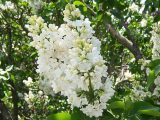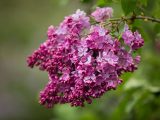
History of Lilacs
The first lilacs at NYBG were planted in the late 1800s as shrub borders along the Garden perimeter. In 1912 horticulturist and renowned lilac hybridizer T.A. Havemeyer (1868–1936) donated a group of lilacs from the collection of 20,000 he had amassed at Cedar Hill, his Long Island estate and nursery. Havemeyer continued to provide the Garden with plants from his collection until his death. The first lilac plantings at this site were established in 1949 with hundreds of plants from Cedar Hill endowed by Havemeyer’s widow, Katherine. The collection was designed by prominent landscape architect Marian Coffin (1876–1957), who designed the campus plan of the University of Delaware and Winterthur, Delaware, and had recently redesigned the Rose Garden at NYBG.
In 2012 the Garden retained landscape architect Shavaun Towers, PLA, FASLA, to create a new plan for the collection, which had declined over the decades as the landscape changed. Towers’s design, based on Coffin’s original drawings, utilized the site’s topography and provided ample space for new plantings. Garden curators developed a planting plan that preserved remaining specimens in good health and worked with lilac growers in New York, New England, and Canada to select new varieties with a range of bloom time and color. The restored Burn Family Lilac Collection features more than 140 different lilac varieties.
New York Lilacs




